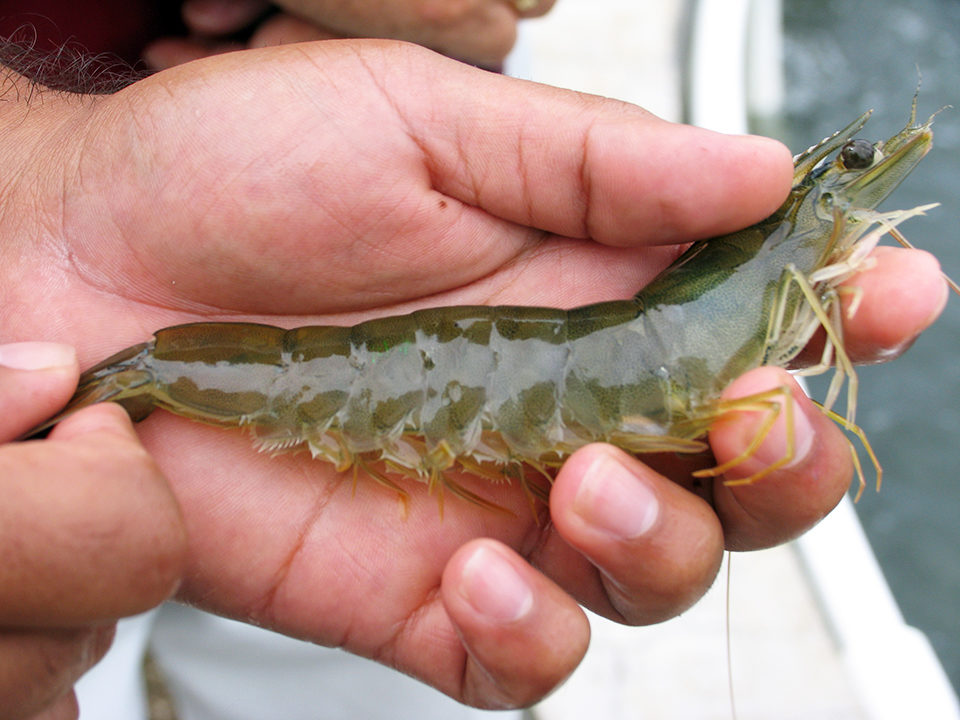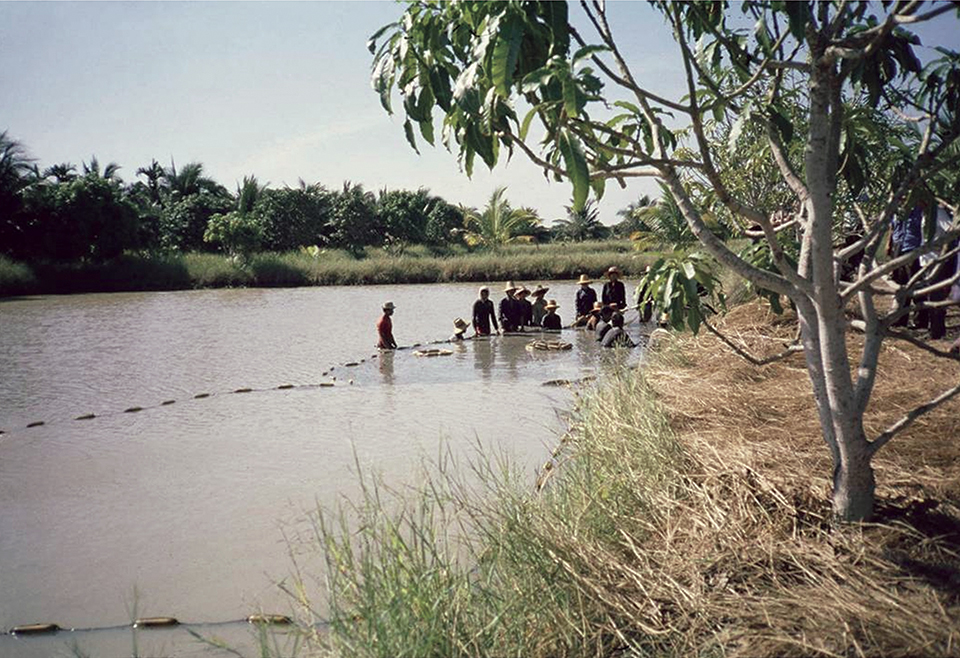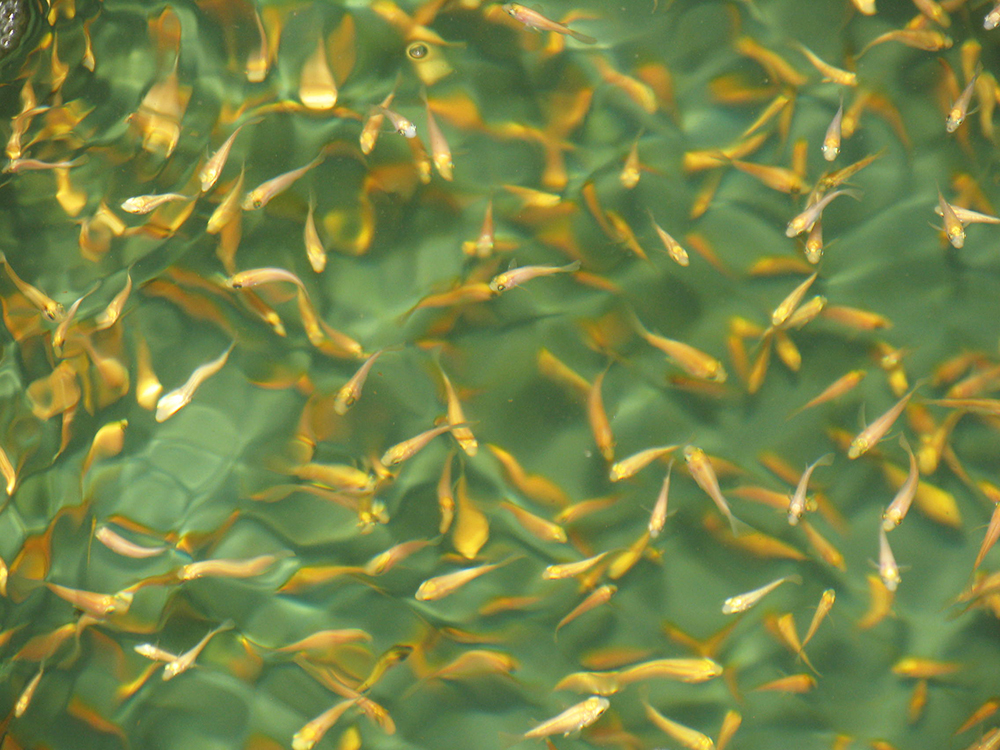Effective tool for minimizing aquaculture losses

Diseases are a constant if not altogether routine aspect of livestock rearing, and as such we often find them in aquaculture. Reducing their presence or impact is part of a risk management strategy that would take into account the present health status of the animals in the facility and neighboring area, and the technical level of the farm staff. The legislative framework of the country and region, their diagnostic capacity and access to health management expertise, and the biosecurity plan for each facility must also be considered.
Table 1 provides a scoring system for these parameters in an attempt to quantify the relative importance of each.
Alday-Sanz, Disease risk evaluation tool. Table 1
| Issue | Issue | Scope | Score |
|---|
Issue | Issue | Scope | Score |
|---|---|---|---|
| 1 | Present health status of the facility | Presence and type of primary pathogens. Possibility of treatment or vaccination. Diseases caused by opportunistic pathogens imply poor health management. | 0-5 |
| 2 | Disease records of the last two years | Presence and type of primary pathogens. Possibility of treatment or vaccination. Diseases caused by opportunistic pathogens imply poor health management. | 0-10 |
| 3 | Capabilities of on-farm staff | Capacity to spot potential health problems. Field diagnostic kits on site. | 0-5 |
| 4 | Disease status of neighboring farms, area | Check World Animal Health (OIE) and scientific literature. | 0-3 |
| Legislative Framework | |||
| 5 | National legislation on disease prevention and control | To prevent the introduction of pathogens into a country or their spread. | 0-10 |
| If not: | |||
| 5.1 | Restriction on the importation of live aquatic animals | Ban of importation from countries of lower sanitary status or request of health certificates. | 0-5 |
| 5.2 | Regulation of the effluents and waste from aquatic animal processing plants | Avoid the release of pathogens into the natural environment and posterior infection of farmed stocks. | 0-1 |
| 5.3 | National reporting and isolation of infected facilities | Early warning system, isolation of infected facilities and national contingency plans. | 0-3 |
| 5.4 | Existence of a national diagnostic reference laboratory | As support and control for the quality of private laboratories. Updated on exotic and emerging diseases. | 0-1 |
| 6 | Regional harmonization | Among neighboring countries to prevent pathogen introduction. | 0-1 |
| 7 | Facility under certification program | Although mostly focused on environmental, organic and social issues, they include good aquaculture practices. | 0-3 |
| Diagnostic Capacity | |||
| 8 | Histology-based methods | Low-sensitive technique for disease outbreak diagnosis and detection of new pathologies. | 0-3 |
| 9 | Polymerase chain reaction (molecular methods) | Highly sensitive technique for known pathogens detection, surveillance and screening of broodstock and offspring. | 0-4 |
| 10 | Evaluation of diagnostic quality | Operation under international standards, participation in ring tests, academic level of staff, regular equipment calibration. | 0-2 |
| Biosecurity | |||
| 11 | External biosecurity | Presence of physical barriers, restriction of incoming vehicles and visitors, water filtration. | 0-3 |
| 12 | Surveillance of wild animals | Sub-clinical infection can result in the transmission of pathogens to farmed animals. | 0-2 |
| 13 | Introduction of live aquatic animals into the facility | Sources of animals (eggs, broodstock or larvae) and health certificates need to be evaluated. | 0-2 |
| 14 | Internal biosecurity | Health management program with a contingency plan in place. | 0-4 |
| 15 | Regular surveillance of farmed animals | Detect presence and prevalence of pathogens to forecast possible epidemics. | 0-3 |
| Total Score | 0-60 |
Health Status
Obviously, the health status of the animals at the time of purchasing or renewing an insurance policy is of great importance, but the disease records of the previous two years are still more important. The expression of diseases due to pathogens can be seasonal. Some pathogens, such as white spot syndrome virus in shrimp, can cause outbreaks during cold weather. During warm weather, pathogens like Streptococcus can manifest in different species of fish.
Pathogens can be classified as primary or secondary. Primary pathogens cause diseases by themselves, while the latter, so-called “opportunistic” pathogens need an underlying situation such as poor environmental conditions or a primary pathogen to cause disease.
If monitoring does not detect primary pathogens within two years, they may be considered absent or eradicated. Diseases caused by opportunistic pathogens require investigation of the primary cause, which often is related to poor health management of the animals. Once conditions are corrected, disease problems disappear.
Not all pathogens have the same impacts, so efforts to combat each of them should not be made to the same extent. Pathogens vary in terms of severity of the symptoms, including mortality and means of transmission (particularly vertical transmission), possibility of exclusion, treatment or vaccination. Therefore, the detection of each specific pathogen in a facility should be evaluated in terms of risk to production.
Regional legislation, harmonization
Well-developed national legislation may prevent the introduction of pathogens into a country or their spread within the country. The European Union Directive 2006/88/EC that was enforced in 2008 provides the most complete legislative frame for the protection of aquaculture production. Other countries are already working on the harmonization of their laws using the European directive as a reference.
It should always be taken into account that, while having suitable legislation is important, its implementation is crucial for success. The degree of implementation of legislation varies greatly among countries, and particularly in developing countries – where most of the aquaculture production takes place – the resources for implementation can be deficient.
Effective disease prevention and control legislation needs to take four major issues into account:
- Restrictions must control the importation of live aquatic animals, as the movement of live animals is the most efficient way of introducing pathogens. Apparently healthy animals can be carriers of pathogens that can be passed on to populations of different susceptibility.
- Effluents and waste from aquatic animal processing plants need to be regulated to avoid the release of pathogens into the environment and later reinfection of farmed stocks.
- Disease outbreaks considered relevant for the industry must be reported, and the infected facilities must be isolated to prevent further spread of the pathogen and minimize losses. The earlier this is done, the easier it is to control the spread of disease.
- A national reference diagnostic laboratory can support private labs on the quality of their methodology and results. The national lab should be regularly updated on exotic and emerging diseases to facilitate quicker response.
Having knowledge of the disease status of a country or region is also relevant due to the continuity of the aquatic bodies, as pathogens do not recognize private properties or boundaries. Often, it is only a matter of time until the disease problem of a neighboring facility or country becomes ours, as well. The risk of disease transfer depends on the type of pathogen and its mode of transmission.
Certification programs
A number of certification schemes address production standards and product quality. The production-oriented programs – Best Aquaculture Practices, GlobalGAP or World Wildlife Fund – deal mostly with sustainability and environmental and social impacts. Quality product programs such as those of Naturland or the International Foundation for Organic Agriculture deal mostly with organic labels, while gourmet products are identified by programs like Label Rouge in France and the United Kingdom.
It is now widely recognized that the implementation of best management practices in farming can bring significant improvements in production, reductions in the outbreaks of disease due to secondary pathogens and increased product quality. But none of these certification schemes specifically covers the area of disease prevention, so complying with the programs does not insure reduction or minimization of losses due to diseases caused by primary pathogens, the ones responsible for catastrophic losses.
Diagnostic capacity
The diagnostic capacity of a farming facility – or its access to it – is of crucial importance for a speedy response to a disease outbreak. Test techniques vary on sensitivity and specificity, and their application should depend of the purpose of the test.
In the case of disease outbreak, low-sensitivity testing such as histology should be used to confirm that lesions are caused by a particular pathogen. In the case of screening or detection of pathogens in the absence of clinical signs, a highly sensitive method such as polymerase chain reaction is necessary.
Evaluation of the quality of diagnostic laboratories and procedures is highly relevant. Operating standards such as EN ISO/IEC, EN 45002 or EN 45003 facilitate this task, as well as the participation in ring tests.
Biosecurity
Biosecurity broadly describes the process of managing biological risks in a holistic manner. Identification of risks can be done from two perspectives – bioexclusion or risk coming from the outside and biocontainment risks that spread within a facility. The principles of biosecurity can be applied to different production species and intensive or extensive systems, but the implementation of biosecurity needs to be defined for each of these cases.
The main activities within external biosecurity involve controls on the introduction of live aquatic animals into the facility, whether they are eggs, broodstock or larvae. This is the most efficient pathway for pathogens, so introductions should only be carried out after the acceptance of a reliable health certificate. Surveillance of the health status of wild animals from the surrounding areas can provide information on future risks faced by the facility. The effectiveness of physical barriers, restriction and disinfection of incoming vehicles, water filtration or recirculation, and use of crab and bird fences needs to be evaluated.
The main activities within internal biosecurity involve the active surveillance of farmed animals to determine their health status and possibly detect emerging disease problems at different developmental stages. The compartmentalization of production units, restriction of staff movement and routine disinfection are examples of the control of pathogens within facilities.
As part of the biosecurity plan, each facility needs a contingency plan. The objective of a contingency plan is to recover in the minimum time, at the minimum cost and with minimum disruption after a disease outbreak. Short recovery and effective control are linked to rapid initial response and rapid, effective implementation of biosecurity measures.
(Editor’s Note: This article was originally published in the May/June 2011 print edition of the Global Aquaculture Advocate.)
Now that you've reached the end of the article ...
… please consider supporting GSA’s mission to advance responsible seafood practices through education, advocacy and third-party assurances. The Advocate aims to document the evolution of responsible seafood practices and share the expansive knowledge of our vast network of contributors.
By becoming a Global Seafood Alliance member, you’re ensuring that all of the pre-competitive work we do through member benefits, resources and events can continue. Individual membership costs just $50 a year.
Not a GSA member? Join us.
Author
-
Victoria Alday-Sanz, DVM, M.S., Ph.D.
Shrimp Health Director, Pescanova
Gran Via 658, 4-1
08010 Barcelona, Spain
Tagged With
Related Posts

Health & Welfare
‘Big picture’ connects shrimp disease, inbreeding
Disease problems on shrimp farms may be partly driven by an interaction between management practices that cause inbreeding in small hatcheries and the amplification by inbreeding of susceptibility to disease and environmental stresses.

Health & Welfare
A comprehensive look at the Proficiency Test for farmed shrimp
The University of Arizona Aquaculture Pathology Laboratory has carried out the Proficiency Test (PT) since 2005, with 300-plus diagnostic laboratories participating while improving their capabilities in the diagnosis of several shrimp pathogens.

Health & Welfare
A holistic management approach to EMS
Early Mortality Syndrome has devastated farmed shrimp in Asia and Latin America. With better understanding of the pathogen and the development and improvement of novel strategies, shrimp farmers are now able to better manage the disease.

Health & Welfare
Biosecurity practices on fish farms need beefing up
Biosecurity measures and preventive strategies are essential in any biological production chain. Properly planned and implemented biosecurity programs will enhance animal health, production and economics.



